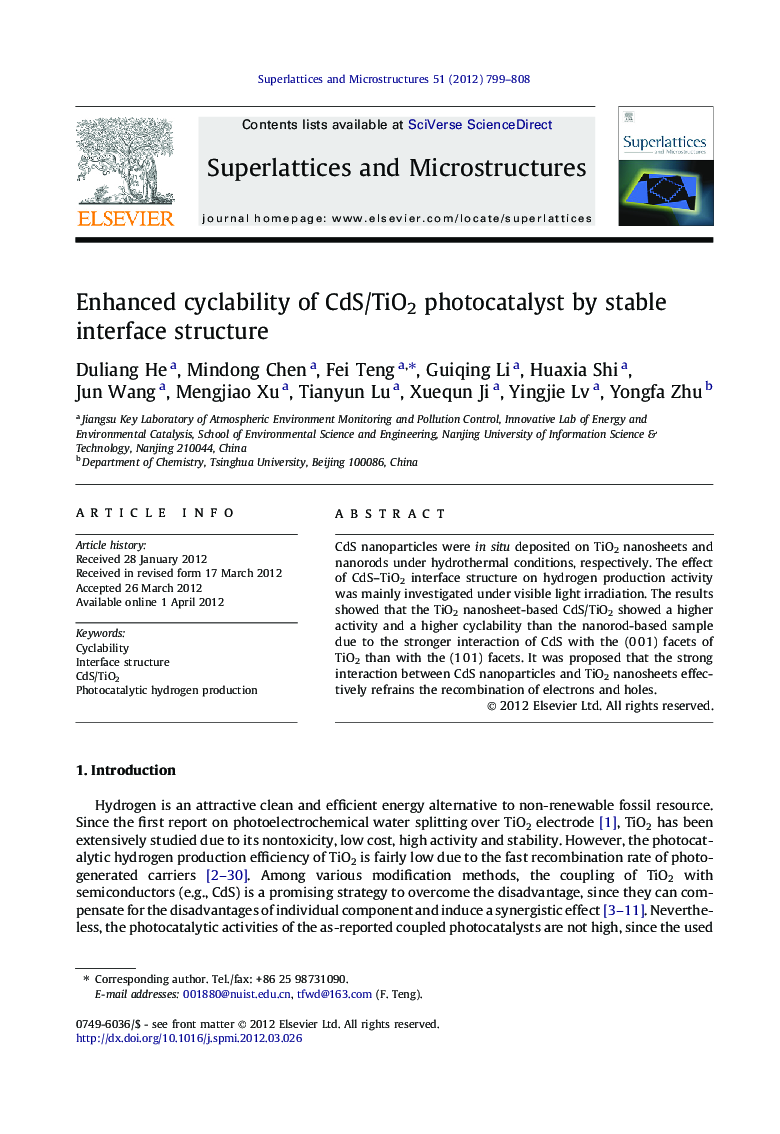| کد مقاله | کد نشریه | سال انتشار | مقاله انگلیسی | نسخه تمام متن |
|---|---|---|---|---|
| 1554071 | 998768 | 2012 | 10 صفحه PDF | دانلود رایگان |

CdS nanoparticles were in situ deposited on TiO2 nanosheets and nanorods under hydrothermal conditions, respectively. The effect of CdS–TiO2 interface structure on hydrogen production activity was mainly investigated under visible light irradiation. The results showed that the TiO2 nanosheet-based CdS/TiO2 showed a higher activity and a higher cyclability than the nanorod-based sample due to the stronger interaction of CdS with the (0 0 1) facets of TiO2 than with the (1 0 1) facets. It was proposed that the strong interaction between CdS nanoparticles and TiO2 nanosheets effectively refrains the recombination of electrons and holes.
Because the strong interaction of CdS nanoparticles with TiO2 nanosheets effectively refrains the recombination of electrons and holes, the CdS/TiO2 nanosheet photocatalyst shows a high cyclability for photocatalytic hydrogen production, which is very useful in practice.Figure optionsDownload as PowerPoint slideHighlights
► The TiO2 nanosheet-based CdS/TiO2 showed a higher cyclability than the nanorod-based one.
► Its high cyclability was ascribed to the strong interaction of CdS with the TiO2 nanosheets.
► The stable CdS/TiO2 composites could be useful in practical applications.
Journal: Superlattices and Microstructures - Volume 51, Issue 6, June 2012, Pages 799–808